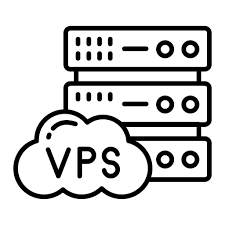What Are Cloud Service Models In Salesforce?

Strong 8k brings an ultra-HD IPTV experience to your living room and your pocket.
Salesforce is a leader in the cloud computing space, providing a broad range of salesforce development services tailored to various company requirements. Infrastructure as a Service (IaaS), Platform as a Service (PaaS), and Software as a Service (SaaS) are the three main service models that make up cloud computing.
Salesforce largely uses the PaaS and SaaS models to run its company. It offers a full range of tools and services to help companies increase customer satisfaction, streamline operations, and spur growth.
Understanding Cloud Service Models
Cloud computing has three core categories called cloud service models. They provide consumers with different services and levels of abstraction. The three main formats for salesforce development services are IaaS, PaaS, and SaaS. Each model meets various business goals and technical requirements. They have unique benefits. They scale well, save costs, are easy to use, and enable rapid development.
Let's examine these models in more detail and see how Salesforce uses them to provide outstanding value.
Three Primary Cloud Service Models And Its Key Characteristics
The three main cloud service models each provide unique benefits suited to various requirements. Let us investigate these cloud service models, their advantages, and their practical applications:
IaaS
IaaS offers virtualized computer resources, such as servers, storage, and networking parts. Without having to make hardware purchases, it enables companies to design and maintain their IT infrastructure.
Essential Elements
- Virtual Machines: These provide flexibility and scalability by allowing users to hire virtual servers on demand.
- Storage: Offers data management scalable storage options.
- Networking: Contains IP addresses, load balancers, and virtual networks.
- Processing power to run workloads and applications is provided by compute power.
Benefits
- Savings: Removes the need to buy and maintain actual hardware.
- Scalability: Quickly increase or decrease resources as per demand.
- Flexibility: Set up infrastructure elements based on particular requirements.
- Disaster Recovery: A range of reliable backup and recovery solutions.
Examples
- Amazon Web Services (AWS): Simple Storage Service (S3; Simple Compute Cloud) and EC2 (Elastic Compute Cloud).
- Microsoft Azure: Includes networking, storage, and virtual machine services.
- Google Cloud Platform (GCP): Scalable computation and storage options.
PaaS
PaaS provides a platform that frees users from managing the infrastructure. It lets them develop, run, and manage applications. By providing pre-built salesforce development services and components, it streamlines the development process.
Essential Elements
- Integrated development environments (IDEs) and code repositories are examples of development tools.
- Middleware: Offers application servers, databases, and runtime environments.
- Database Management: We provide managed database services for both relational and non-relational databases.
- Application Hosting: Aids in the growth and deployment of applications.
Benefits
- Rapid Development: Utilizing pre-built tools and components, the development process is accelerated.
- Cost savings: Less maintenance of the software and hardware infrastructure is required.
- Scalability: Applications with scalability can easily grow to meet user demand.
- Focus: Disables infrastructure administration so that developers can concentrate on coding and creativity.
Examples
- Salesforce Platform (formerly Force.com)
- Google App Engine
- Microsoft Azure App Services
- Heroku
SaaS
Software as a Service (SaaS) is a way to deliver software. Users can access applications via the internet, hosted by a service provider. It removes the requirement for businesses to set up and operate apps on their own PCs or data centers.
Essential Elements
- Web-Based Access: A web browser is used to access applications.
- Subscription Model: Usually provided with monthly or yearly costs, on a subscription basis.
- Automatic Updates: Updating and maintenance are handled by providers.
- Multi-Tenancy: Supports numerous users and organizations on a single instance thanks to multi-tenancy.
Benefits
- Accessibility: Anywhere with an internet connection can access applications.
- Scalability: The ability to easily scale your salesforce development services to meet expanding company needs.
- Cost-effectiveness: Minimizes the requirement for large initial hardware and software expenditures.
- Maintenance-Free: The providers take care of security, software upgrades, and maintenance.
Examples
- Salesforce CRM
- Google Workspace
- Microsoft Office 365
- Slack
- Dropbox
In Summary
Cloud-computing businesses must know the three main service models: Software as a Service (SaaS), Platform as a Service (PaaS), and Infrastructure as a Service (IaaS). Every model has a distinct benefit and meets various business and IT salesforce development services. Organizations can focus on innovation and growth while increasing efficiency and cutting expenses by selecting the appropriate model from a reliable service model provider like Aress.
Note: IndiBlogHub features both user-submitted and editorial content. We do not verify third-party contributions. Read our Disclaimer and Privacy Policyfor details.







